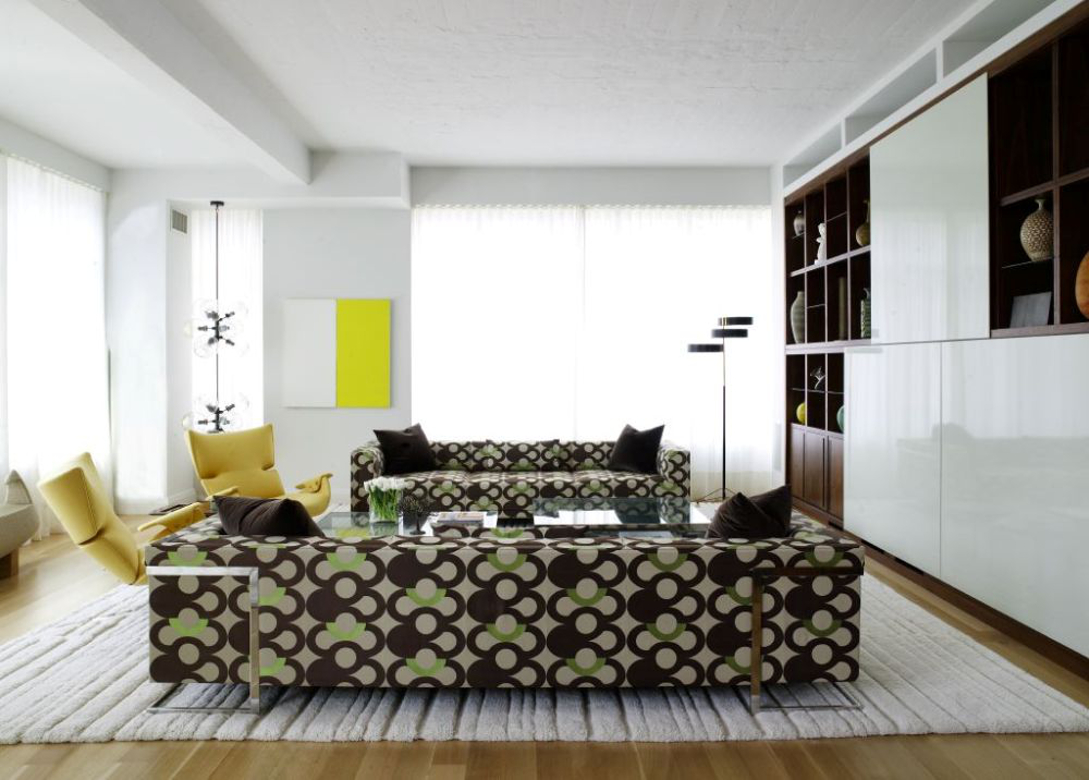
CarolEgan Interiors designed a 16th-floor apartment in TriBeCa, New York with “a happy and sophisticated palette of color and material texture to keep your eye moving through the space.”
 Danish vintage furniture from the 1940s and 1950s were matched with Carol Egan’s own contemporary, custom-made designs. Both share similar sculptural (and minimalist) qualities that effortlessly bridge the generational gap. So instead of looking like a strange smorgasborg, individual pieces—each one with its own personality—share a connection with one another, like relatives in an extended family.
Danish vintage furniture from the 1940s and 1950s were matched with Carol Egan’s own contemporary, custom-made designs. Both share similar sculptural (and minimalist) qualities that effortlessly bridge the generational gap. So instead of looking like a strange smorgasborg, individual pieces—each one with its own personality—share a connection with one another, like relatives in an extended family.
“One of the first items I selected,” she says, “was the fabric for the living room sofas, a 1968 design by Paule Leleu called Arabesque manufactured by Prelle. The material surfaces, textiles, furniture, area rugs, and lighting serve to create a dynamic visual interplay in the open plan because of their graphic qualities and clean lines.”
A six-arm rope chandelier designed by French artist Christian Astuguevielle hangs tantalizingly low from the bedroom ceiling, inviting you to examine its superb workmanship. It also serves to play “with the scale in the room alongside the four-poster bed. I wanted the bedroom to feel like a jewel box of textures, yet feel tranquil…”

This TriBeCa loft, though, is not only about the splendour of well-curated interiors. Says Egan, “When it comes to loft living, storage is always an issue!” Mahogany cabinets in the living room custom-designed by Egan herself, for instance, tuck away a widescreen TV behind sliding panels.

The Dublin native has transformed a space in an area once ridiculed for its featureless factories into the envy of even the hippest TriBeCa homeowners, adding to her growing reputation as one of the world’s leading interior designers. ![]()

